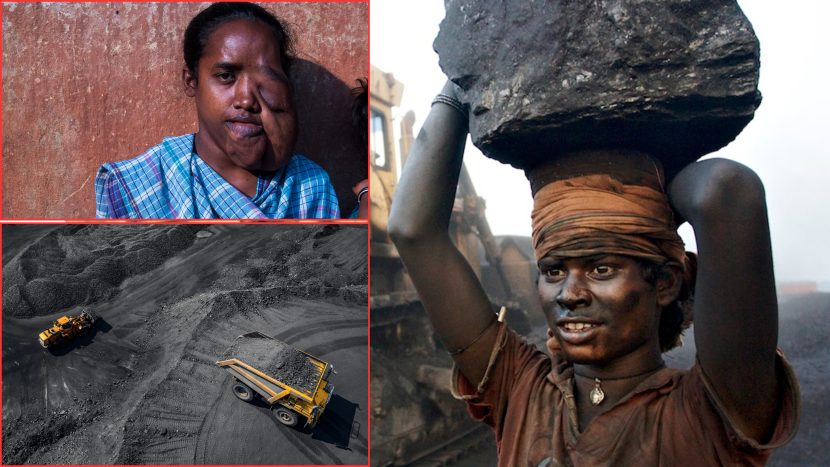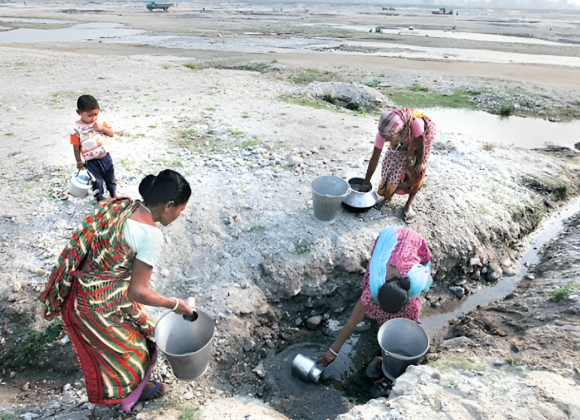Jharkhand, located in eastern India, is characterized by a rugged and diverse topography that largely defines its natural landscape and resource distribution. The state lies almost entirely on the Chotanagpur Plateau, which is an extension of the Deccan Plateau and is composed of hard igneous and metamorphic rocks. This plateau region gives Jharkhand a distinctly elevated terrain with an average altitude ranging from 600 to 1,100 meters above sea level. The land is undulating and marked by flat-topped hills, ridges, and deep valleys carved by numerous rivers.
The geological structure makes Jharkhand highly favorable for mineral formation and mining activities. The ancient rock formations of the plateau are rich in metallic and non-metallic minerals, including coal, iron ore, bauxite, copper, uranium, mica, and limestone. The presence of igneous intrusions, faults, and folds in the plateau’s structure has allowed minerals to concentrate in specific zones, making them economically viable for extraction. For instance, the coalfields of Dhanbad, Jharia, and Bokaro are located in sedimentary basins formed within this plateau, while iron ore is abundantly found in West Singhbhum, where the terrain includes iron-rich banded hematite formations.
Therefore, the topography of Jharkhand is not only a defining natural feature of the state but also a key reason for its immense mineral wealth. The combination of ancient rock systems, tectonic activity, and erosion over millions of years has made the state one of India’s most important mining hubs, attracting both public and private sector investments. However, this also calls for responsible mining practices to preserve the fragile ecological balance of the region.
However, despite this abundance, the state faces issues like poverty, displacement, environmental degradation, and underdevelopment. This raises a critical question: Are Jharkhand’s natural resources a blessing or a curse?
Natural Wealth of Jharkhand
Jharkhand is often referred to as the “land of forests and minerals” due to its abundant natural wealth. The state is richly endowed with a variety of natural resources, including minerals, forests, rivers, and fertile land. Jharkhand alone accounts for approximately 40% of India’s total mineral reserves and more than 29% of total mineral production. It holds a leading position in the production of several key minerals:
- Coal – around 27% of India’s reserves [1]
- Iron ore – about 25%
- Copper ore – over 18%
- Bauxite – around 9%
- Mica – nearly 46%
- Uranium – most of India’s uranium is found in Jharkhand (Jaduguda mines in East Singhbhum)
Districts like Dhanbad, Bokaro, West Singhbhum, Hazaribagh, and Latehar are rich in these resources, making Jharkhand a vital center for mining and heavy industries.
Apart from minerals, Jharkhand is also home to dense forests, which cover about 30% of its geographical area. These forests are rich in biodiversity and provide valuable forest products such as sal, teak, kendu leaves, lac, and medicinal herbs. Forests support the livelihood of many tribal communities and play a crucial role in maintaining ecological balance.
The state is crisscrossed by numerous rivers, including the Damodar, Subarnarekha, Koel, and Barakar, which provide water for irrigation, hydroelectric power generation, and domestic use. Jharkhand also has fertile valleys and a moderate climate, supporting agriculture in some regions, particularly for crops like rice, maize, pulses, and oilseeds.
In summary, Jharkhand’s natural wealth forms the backbone of its economy and holds immense potential for sustainable development. However, responsible management and conservation of these resources are essential to ensure long-term ecological balance and prosperity for future generations.
Jharkhand’s Natural Wealth: A Boon for Development
The natural resources of Jharkhand are often seen as a tremendous blessing for the state and the nation. With around 40% of India’s total mineral wealth, Jharkhand plays a vital role in powering industries and supporting economic growth. Its abundant reserves of coal, iron ore, bauxite, copper, uranium, and mica have made it a hub for mining and heavy industries. These resources have attracted major public and private investments, leading to the establishment of large industrial units, steel plants, and thermal power stations, particularly in districts like Dhanbad, Bokaro, and East Singhbhum. This industrial development has generated employment for thousands, improved infrastructure, and increased state revenue through royalties and taxes. The forest wealth of Jharkhand, covering nearly 30% of its area, also supports livelihoods through forest-based products and eco-tourism. Additionally, the river systems crisscrossing the state offer potential for irrigation and hydropower development. Together, these resources form the backbone of Jharkhand’s economy and hold immense potential for further development if harnessed sustainably.
The Human Cost of Natural Wealth
While Jharkhand is rich in mineral resources, the social and environmental toll of exploiting this wealth has been devastating for many communities, especially the indigenous and rural populations. In the pursuit of economic gain, vast areas of forest land have been cleared for mining, leading to the displacement of thousands of people who depend on the land for their livelihood and cultural identity. The worst effects are felt in areas like Jaduguda, where uranium mining has caused serious health issues due to radiation exposure. Reports have highlighted alarming cases of miscarriages, stillbirths, infertility, and physical and mental disabilities among local residents, especially children. The lack of proper safety protocols and careless disposal of radioactive waste have contaminated water sources and the surrounding environment. Similarly, coal and iron ore mining have contributed to air and water pollution, respiratory diseases, and deteriorating living conditions. Despite contributing significantly to the state and national economy, these communities often receive little to no benefit from the resource extraction on their land. Poor compensation, inadequate rehabilitation, and neglect of health services amplify their suffering. In this way, Jharkhand’s natural wealth, while valuable to industry, has come at a tragic human cost that raises urgent questions about sustainable and inclusive development.

Striking a Balance: The Way Forward
Jharkhand’s journey with its natural resources highlights the urgent need to strike a balance between economic development and human and environmental well-being. While the state’s mineral wealth has undeniable potential to drive industrial growth and generate revenue, unregulated exploitation has led to ecological degradation, health crises, and the marginalization of indigenous communities. Moving forward, a more sustainable and inclusive approach is essential. This includes enforcing strict environmental regulations, ensuring scientific and safe mining practices, and prioritizing the rehabilitation of displaced populations. Local communities must be given a voice in decision-making processes, and a fair share of the profits must be invested back into health, education, and infrastructure in mining-affected regions. Moreover, the promotion of alternative, eco-friendly industries such as agroforestry, eco-tourism, and renewable energy can reduce overdependence on mining. By aligning development goals with principles of social justice and environmental stewardship, Jharkhand can transform its natural wealth into a true asset—one that supports progress without sacrificing the rights and dignity of its people or the health of its land.
Final Thought
Jharkhand stands at a critical crossroads where its immense natural wealth can either continue to deepen inequality and environmental harm or be transformed into a powerful tool for sustainable and inclusive growth. The stories of displacement, health crises, and ecological damage serve as stark reminders that development must not come at the cost of human lives and the environment. At the same time, the state’s resources hold tremendous promise if managed wisely, with transparency, accountability, and compassion. The future of Jharkhand depends not just on what lies beneath its soil, but on the choices made by its leaders, industries, and citizens. By learning from past mistakes and committing to a balanced, people-centric approach, Jharkhand can truly turn its natural wealth into a lasting blessing for all.




